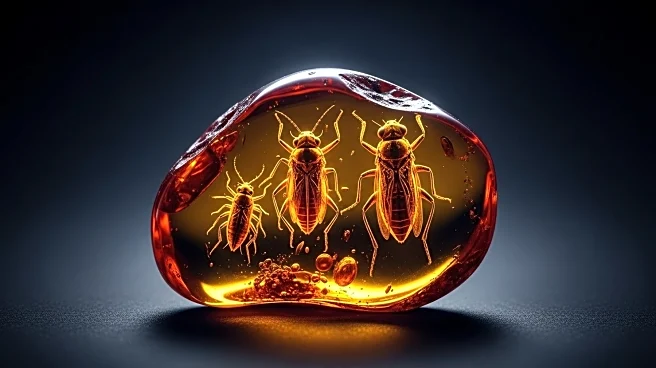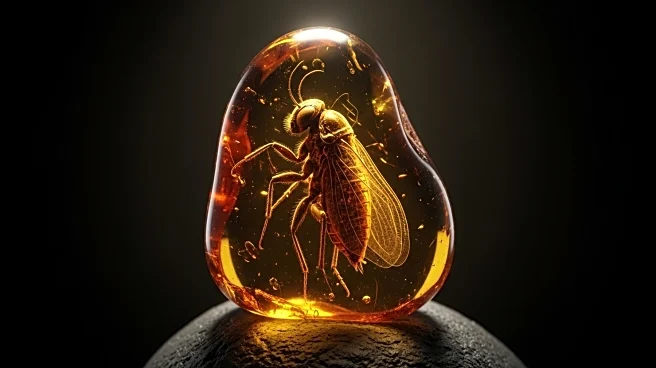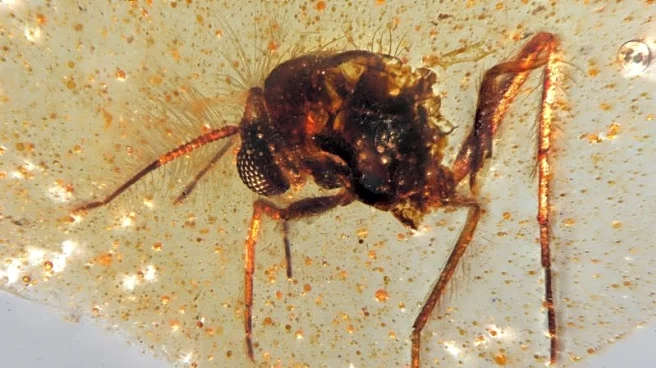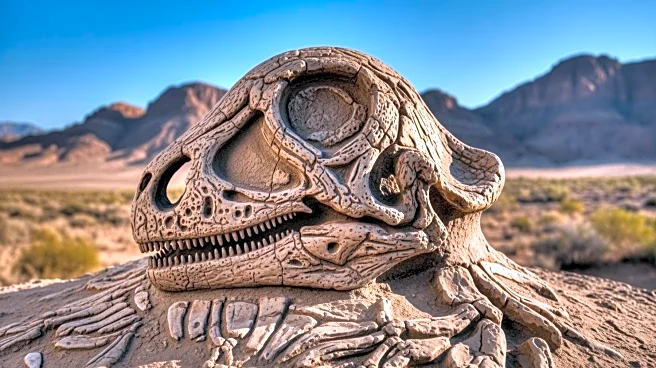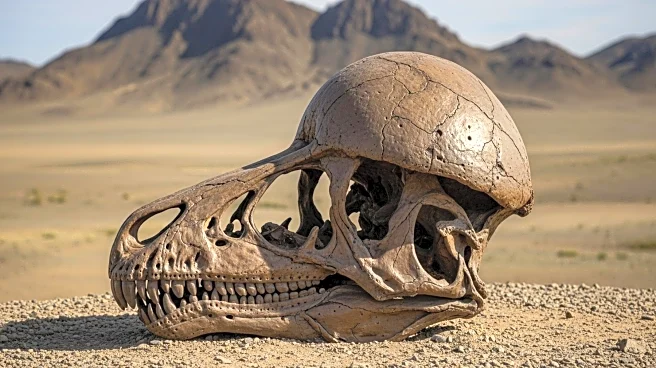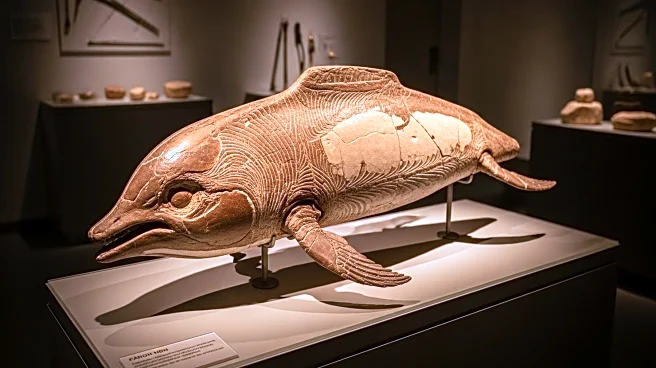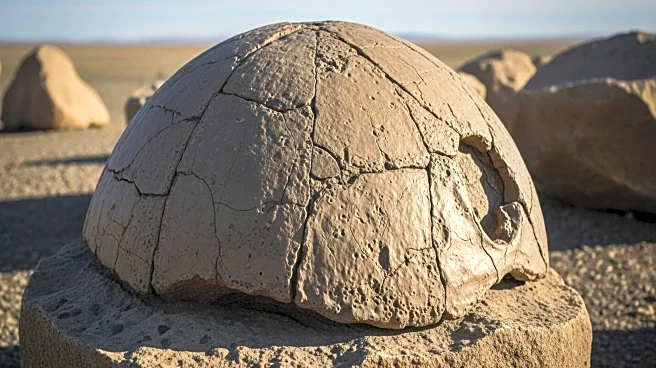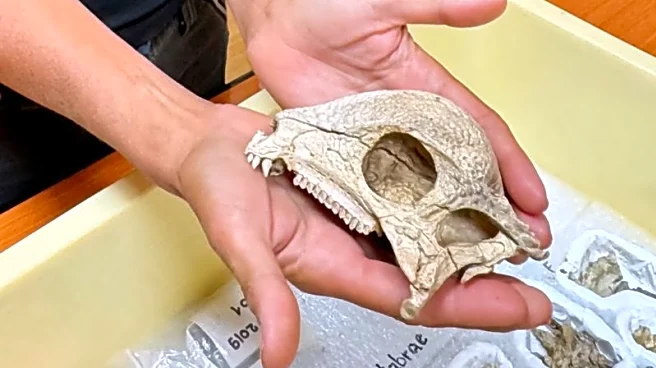What's Happening?
Researchers from the University of Barcelona, led by Xavier Delclòs, have uncovered a significant amber deposit in Ecuador's Genoveva quarry, containing fossilized insects from the Cretaceous period. This discovery marks the first time such amber with bio-inclusions has been found in South America. The amber, believed to originate from conifer resin, has preserved a variety of insects, including mosquitoes, beetles, and flies, which coexisted with dinosaurs in a humid, equatorial forest. The findings provide a rare glimpse into the ecosystem of the time, revealing the presence of lakes, rivers, and swamps that supported these species.
Why It's Important?
The discovery of these amber deposits is crucial for understanding the biodiversity and ecological dynamics of prehistoric South America. It offers insights into the types of species that existed and their interactions within the ecosystem. The preservation of such delicate organisms in amber allows scientists to study species that are rarely fossilized, providing a more comprehensive picture of life during the Cretaceous period. This research could lead to further discoveries about the evolutionary history of insects and their role in ancient ecosystems.
What's Next?
The research team plans to continue exploring the Genoveva quarry and other potential sites in South America to uncover more amber deposits. These efforts aim to expand the understanding of ancient ecosystems and the evolutionary history of the species preserved in amber. The findings could also contribute to broader studies on climate change and environmental shifts over millions of years.
Beyond the Headlines
The discovery highlights the potential for South America to yield further significant paleontological finds, which could reshape current understanding of prehistoric life on the continent. The use of advanced techniques, such as synchrotron imaging, in analyzing these fossils may set new standards for paleontological research, offering more detailed reconstructions of ancient ecosystems.

